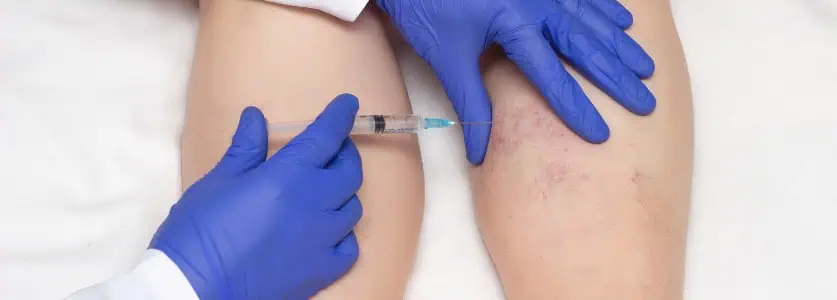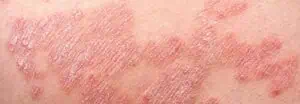Foam Sclerotherapy
Home » Treatments » Foam Sclerotherapy
Award winning dermatology service, with over 20 years on experience
Short waiting lists, on some occasions offering same week appointments
Safe environment, in Care Quality Commission approved facilities
CONDITIONS:
Foam SCLEROTHERAPY
WHAT IS SCLEROTHERAPY?
The medical procedure foam sclerotherapy is used to treat varicose veins and spider veins. This minimally invasive procedure involves injecting a sclerosant solution directly into the afflicted veins. The sclerosant irritates the veins’ interior lining, causing the veins to collapse and eventually disappear.

How Long After Sclerotherapy Do Veins Disappear?
The time it takes for veins to disappear after sclerotherapy can differ from person to person. Typically, it takes weeks to months for treated veins to diminish and become less noticeable.
How Many Sclerotherapy Treatments Are Required?
The number of sclerotherapy treatments required depends on the patient and the severity of the vein disorder being addressed. Size, quantity and location of the vessels, as well as the individual’s response to the treatment, can all impact the number of treatments required.
FREQUENTLY ASKED QUESTIONS
IS CLEROTHERAPY PAINFUL?
CAN I EXERCISE AFTER SCLEROTHERAPY?
ARE THERE ANY SIDE EFFECTS OF SCLEROTHERAPY TREATMENT?
WHAT TO AVOID AFTER SCLEROTHERAPY?
WHAT TO DO AFTER SCLEROTHERAPY TREATMENT?
REQUEST A CALL BACK
Please fill in this form and one of our team will give you a call back to arrange a consultation with one of our expert dermatologists.

HEAR FROM OUR PATIENTS
foam sclerotherapy TREATMENT NEAR ME AT STRATUM DERMATOLOGY CLINICS
We treat and remove varicose veins in our Manchester, Shrewsbury, Cheltenham and Birmingham clinics. To book an appointment at either clinic, please call 0800 048 9230. Our team will guide you through the process and schedule a consultation with our specialist vascular surgeon for varicose vein treatment. We offer a Free Scan worth £500 with every consultation booked.
By choosing to do foam sclerotherapy at our clinics, you can be sure of being in good hands. We work with leading experts in the field of dermatology to ensure you have the best experience and treatments. All our clinics are regulated by the Care Quality Commission, are part of the British Association of Dermatologists and are top rated by patients on Doctify and Trustpilot. Both our clinics and the consultants who work here are recognised by the main healthcare insurance providers.
latest INSIGHTS AND ADVICE

Guide to Fall Skin Conditions
Autumn, with all its stunning colours, also brings some challenges for our skin. As the air gets cooler and the leaves turn vibrant shades, it’s a reminder that we’re steadily approaching winter. Keeping your skin glowing and healthy during this transition from summer to the

Eczema Awareness Month – Complete Guide on Eczema
October is Eczema Awareness Month. For individuals living with eczema, you will be all too familiar with the trials of handling this skin complaint. It’s our mission throughout October and beyond to educate, support and empower you by delivering invaluable insights on its origin, available

Understanding Varicose Veins: Symptoms, Treatments and Prevention
Varicose Disease Awareness Month focuses on raising awareness about varicose veins, a common but often ignored condition affecting millions globally. This September, we’re highlighting the importance of early detection, available treatments and lifestyle changes to effectively manage varicose veins. By increasing awareness, we aim to
